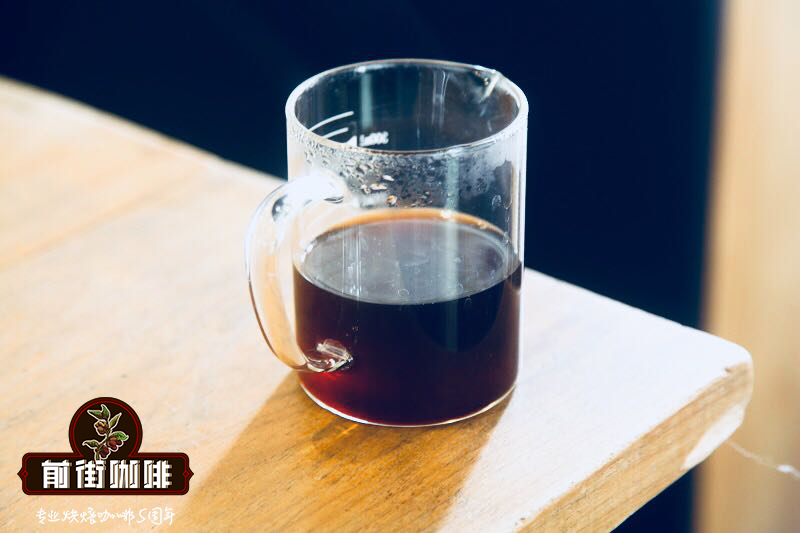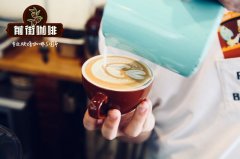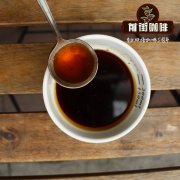How much Brazilian coffee beans yield Brazilian fine coffee beans flavor characteristics brewing parameters Suggestions

Professional coffee knowledge exchange more coffee bean information please follow the coffee workshop (Wechat official account cafe_style)
The variety, geography and climate of coffee, soil texture, planting techniques, harvesting and processing methods, like the results from the land, will directly affect the quality of raw coffee beans. In addition to Colombia, the other big coffee country in South America is Brazil. Brazil is the world's number one coffee producer, producing 2.6 million metric tons last year, accounting for about one-third of the world's output.
Brazil, the world's largest coffee producer, accounts for 30 per cent of global coffee usage if it covers "commercial" and "boutique" coffee. In addition to the original conditions such as climate and geographical area, Brazil has created today's huge national income and benefits because of the "industrialization" of coffee.
Brazilian coffee is also a regular in blending coffee ingredients and acts as a skeleton in a cup of coffee. Most Brazilian coffee flavors are gentle and solid, like roasted hazelnuts and cream, with a low sour taste, a long, light finish and a smooth texture. Japanese people like deep-roasted Brazilian coffee very much, so Japanese brands of instant or canned coffee will drink typical "Brazilian flavor".
The common Brazilian producing areas are Cerrado and Sul de Minas. In the early years, coffee produced by Santos is more common. Because of its ordinary flavor, it has been rarely seen in the trend of boutique coffee in recent years, and it is often used to match beans.
Brazil mainly grows Arabica Burbon and Catuai species. The yield of these beans is higher than that of many varieties.
As the world's largest coffee producer, Brazil's coffee picking and processing technology leads the world, which of course has something to do with the mechanization level and intensive production of the Brazilian coffee growing industry. Different from the picking methods of other countries, Brazilian coffee follows the principle of picking first and then screening; most of the coffee is picked mechanically and a few are stripped.
In the raw bean treatment process, the most common treatment methods of coffee are: sun, half-sun, water washing, half-washing. Most Brazilian coffee is treated by natural sun or semi-washing, while the most commonly used is natural sun ("natural sun" means that coffee is fully absorbed by sunlight on the branches and picked after it is fully ripe).
Brazil's landform is flat and monotonous, lack of microclimate, most of which are tropical, with tropical rain forest climate in the north, savanna climate in the middle and subtropical monsoon humid climate in some parts of the south. The average temperature is 25 Murray 28 degrees, and the annual average temperature in the southern region is 16 Murray 19 degrees. The climate characteristic of low rainfall and long sun exposure has led to the widespread use of sun treatment in the region, which is represented by the two main producing areas of Brazil: Parana (Parana) and Sao Paulo (Sao Paulo).
Even though Brazil has begun to improve its quality, boutique Brazilian coffee is still in the minority. Generally speaking, the flavor of commodity-grade Brazilian coffee is insipid, and some of them are more thankless, such as dirt or wood. However, when it comes to high-quality high-quality Brazilian coffee, the transparent, sweet and smooth taste, just like old Pu'er, is suitable to spend the morning or weekend afternoon quietly.
However, in recent years, Brazil, a big coffee bean producer, has been affected by dry weather and exchange rate fluctuations, causing coffee bean prices in the market to move. It is estimated that coffee bean futures will rise by 20% by the end of this year, the total output will also be reduced by 5.5 million bags, and international prices will rise. However, domestic companies have only raised prices at the beginning of the year, so they are sure to absorb them on their own and will not affect consumers.
Qianjie Brazilian Coffee recommended brewing parameters:
V60 enjoy 88 ℃ / 1 14 / time one minute and fifty seconds
Important Notice :
前街咖啡 FrontStreet Coffee has moved to new addredd:
FrontStreet Coffee Address: 315,Donghua East Road,GuangZhou
Tel:020 38364473
- Prev

Unique high altitude | what is the flavor of valamar in Val Mar Manor, Guatemala? Guatemala
Professional coffee knowledge exchange more coffee bean information please follow the coffee workshop (Wechat official account cafe_style) what is the flavor of valamar, the unique Varma estate in Guatemala? What are the eight major coffee producing areas in Guatemala? Valma Manor is located in the Koban area, a perfect producing area with steep mountains, green rain forest and charming scent of flowers.
- Next

Honey treatment | what is the flavor of Sumatra Manning-Glinchi Kerinci coffee beans? How to rush
Professional coffee knowledge exchange more coffee bean information please follow the coffee workshop (Wechat official account cafe_style) honey treatment | Sumatra Manning-Glinchi Kerinci coffee bean flavor? How to cook Glinchi? Kerinci honey is provided by 600 farmers in the Kerinci Valley, a fertile land with volcanic soil rich in more than 300000 people.
Related
- Detailed explanation of Jadeite planting Land in Panamanian Jadeite Manor introduction to the grading system of Jadeite competitive bidding, Red bid, Green bid and Rose Summer
- Story of Coffee planting in Brenka region of Costa Rica Stonehenge Manor anaerobic heavy honey treatment of flavor mouth
- What's on the barrel of Blue Mountain Coffee beans?
- Can American coffee also pull flowers? How to use hot American style to pull out a good-looking pattern?
- Can you make a cold extract with coffee beans? What is the right proportion for cold-extracted coffee formula?
- Indonesian PWN Gold Mandrine Coffee Origin Features Flavor How to Chong? Mandolin coffee is American.
- A brief introduction to the flavor characteristics of Brazilian yellow bourbon coffee beans
- What is the effect of different water quality on the flavor of cold-extracted coffee? What kind of water is best for brewing coffee?
- Why do you think of Rose Summer whenever you mention Panamanian coffee?
- Introduction to the characteristics of authentic blue mountain coffee bean producing areas? What is the CIB Coffee Authority in Jamaica?

